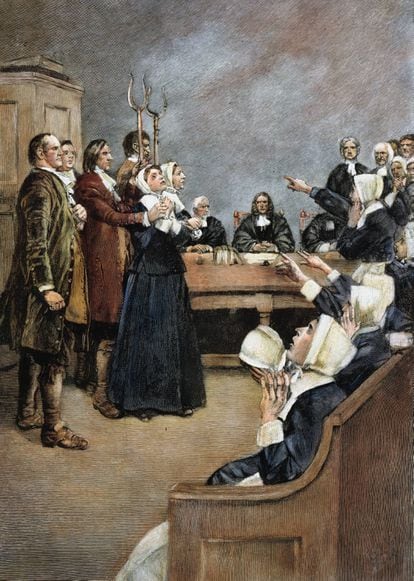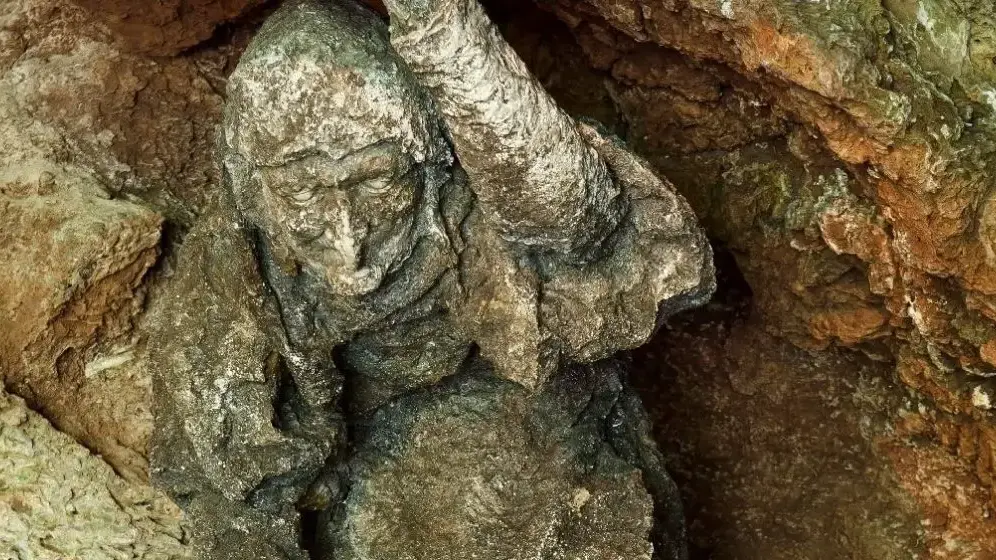While statues of slavers and slavers continue to fall in the United States, the embers of the bonfires in which women accused of committing spells and trickery are also fading.
In the umpteenth review of history to rehabilitate victims, the latest episode concerns the last
official witch
of Salem, the great trial held in the English colony of Massachusetts (today the homonymous State of the USA) between 1692 and 1693. Thanks to the initiative of a high school teacher and a group of students from Andover, a town in the county where where Salem is located, your spirit will be able to wander peacefully.
The enthusiastic students began the rehabilitation process in 2020 and managed to convince Democratic Senator from Massachusetts Diana DiZoglio, who took up the cause and promoted the pardon, announced last week.
It has taken 329 years for Elizabeth Johnson Jr.'s name to be definitively cleared.
She was the last of the Salem witches who had not been rehabilitated and although she was spared death by hanging, her existence was buried under the weight of stigma until she died at the age of 77, an unprecedented longevity then.
The woman, who according to historians showed signs of mental instability and was single and childless - all indications of witchcraft at the time - pleaded guilty before the court of inquisitors, to which she dragged almost 30 members of her extended family, as if witchcraft were contagious or hereditary, or both at the same time.
Along with her, her mother, several aunts and her grandfather, a church pastor, were tried.
He defined her before the judges as a simple person, "in the best of cases",
according to historian Emerson Baker, author of a book on the mega-process.
Simple would most likely be equivalent to different according to the short-sightedness of the judges in that superstitious and pre-scientific stage.
The fact of not having had descendants deprived her of anyone who claimed her good name, as happened with the rest of the accused.
The first attempt occurred just beginning the eighteenth century.
Then, in the fifties of the last century, Massachusetts passed a law to exonerate the convicted, but the initiative failed to collect all the names.
Another attempt to do justice in 2001 left her out because she had been formally left for dead — executed — after being found guilty in 1693. The social hysteria against everything that was out of the norm, against the minimum exercise of will, was relentless against women, as recalled by the homonymous play by Arthur Miller or its adaptation by the playwright to the big screen, in 1996, as well as recent sequels.
A very attractive material for artistic creation,
Illustration of the trial of two of the Salem witches, in 1692. The Granger Collection / cordon press
Salem was more than a trial for witchcraft.
It was a collective exorcism fueled by a puritanical inquisition rooted in paranoia and xenophobia, according to historians.
A free auto de fe, which triggered the worst instincts: fear, in addition to the human condition of blaming others for one's own discomfort.
At least 172 people were prosecuted in the process in 1692. About 35% confessed their alleged guilt and escaped the gallows, leaving the gallows reserved for those who insisted on claiming their innocence;
about twenty, according to sources.
The rest of the detainees were acquitted or sentenced to prison.
A collective scarecrow in which it is not difficult to guess the subsequent threat of the Ku Klux Klan.
It's hard not to think what bonfires would have burned today,
The Great Salem Witch Hunt offers a possible rereading in terms of gender.
Se non è vero è ben trovato
, as the adage suggests.
Witches, like the ones in Salem, or like the woman in
The Scarlet Letter
, Nathaniel Hawthorne's novel, turned into a movie in the 1950s, demonized for going off the rails.
The Puritanism of the dominant society against any type of heterodoxy or free verse, against rebels with or without a cause who in many cases were targeted for wearing exotic clothing by Puritan standards or for daring to drink in a tavern, a sacrilege for the morality of The time.
It is not difficult to draw a straight line from the hood of a witch on the gallows to the red headdress of the maid in Margaret Atwood's novel: women demonized, objectified, made the scapegoat for deeper ills.
In addition to gender, other historians underline the socioeconomic dimension of the process: the stark inequality, together with racism, the original sin of the United States since long before the declaration of independence.
The trials targeted the most vulnerable of a colonial society, during a period of economic instability that sparked rivalry between the families of Salem.
A society steeped in interpersonal conflict, much of it stemming from competition for resources, according to historian Edward Bever.
To survive, anything went, from physical aggression to threats, curses or insults.
One of the first defendants, Sarah Osborne, was a poor widow who dared to claim her husband's land for herself, defying the natural, customary laws that granted inheritance to her children.
The accusation of witchcraft ended his claim.
Another was Tituba, an indigenous slave, deviated from the norm because of her racial origins.
Sarah Good was also poor, but she defended herself from the humiliations of her neighbors, and that led her to the gallows;
her daughter, Dorothy
Dorcas
Good was Salem's youngest victim: Arrested at just four years old, she spent eight months in prison.
One thing hasn't changed in history since then: vulnerable women pay the price of circumstances beyond their control.
That the Puritans of the time considered women - the heirs of the evil Eve - prone to temptations such as the desire for material possessions or sexual satisfaction was only an added factor.
Poor, homeless and childless, these women exposed to the prevailing morality were gallows meat.
But Elizabeth Johnson Jr. not only managed to save her life, but also, 329 years later, her honor.
50% off
Subscribe to continue reading
read without limits
Keep reading
I'm already a subscriber









